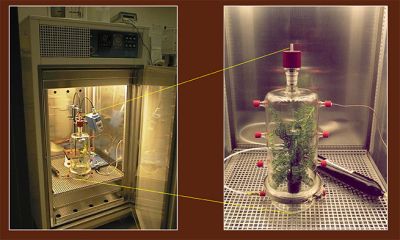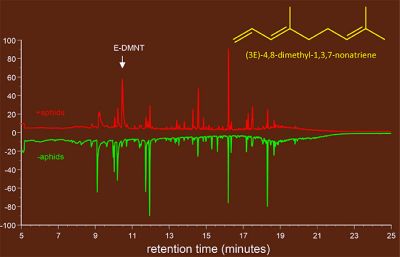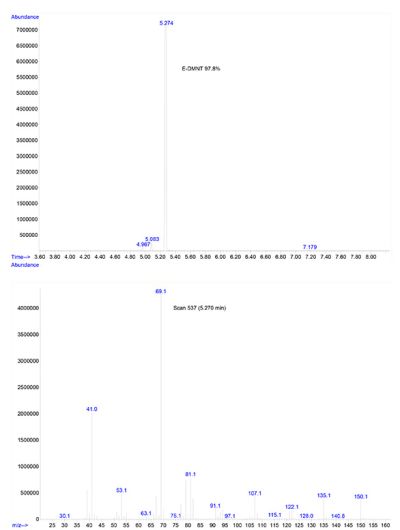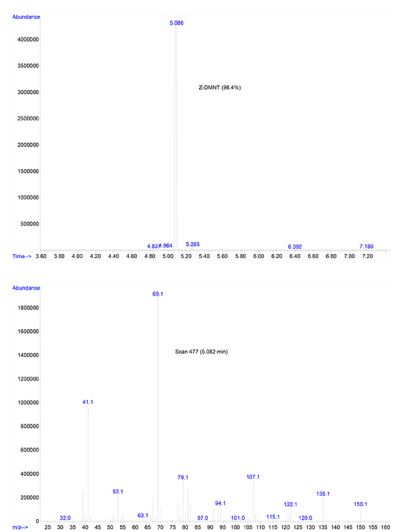Rare plant alarm volatile (E)-4,8-Dimethyl-1,3,7-nonatriene (E-DMNT) available from Pherobank BV
The unusual acyclic C11 homoterpene (E)-4,8-Dimethyl-1,3,7-nonatriene is emitted by many plants as a response to herbivore attack (see figures 1 and 2). Also this volatile is described as being an attractant for several insect species, among which Cydia pomonella (males and females), Neoseiulus womersleyi, Myllocerinus aurolineatus (Tea weevil), Phytoseiulus persimilis (Predatory mites), Orseolia oryzivora (African rice gall midge), Cotesia marginiventris and Microplitis croceipes.
Highlighted literature reference:
Environmental Entomology Apr 2011 : Vol. 40, Issue 2, pg(s) 420- 430, Identifying (E)-4,8-dimethyl-1,3,7-nonatriene plus acetic acid as a new lure for male and female Codling moth (Lepidoptera: Tortricidae)
The Z-isomer (Z)-4,8-Dimethyl-1,3,7-nonatriene (Z-DMNT) is available as well.
Product description:
(E)-4,8-Dimethyl-1,3,7-nonatriene (E-DMNT)
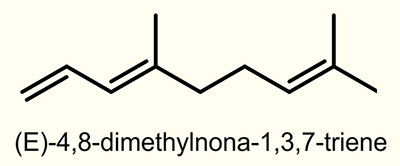
CAS No: [19945-61-0]
Pherobank product number: 10595
Formula: C11H18
Molecular weight: 150.26
Purity: >97% (see figure 3)
Availability: <100 grams typically in stock, and up to 1 kg
(Z)-4,8-Dimethyl-1,3,7-nonatriene (Z-DMNT)

CAS No: [21214-62-0]
Pherobank product number: 10596
Formula: C11H18
Molecular weight: 150.26
Purity: >98% (see figure 4)
Availability: gram quantities typically in stock


